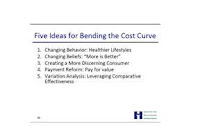
 our country. Will we be able to come together as a nation to solve the many challenges we face, or will we remain partisan and divided and only expect others to sacrifice instead of ourselves. All Americans are going to need to sacrifice in some way if we’re going to pull ourselves out. It’s a new mindset for most. Time will tell whether we will.
our country. Will we be able to come together as a nation to solve the many challenges we face, or will we remain partisan and divided and only expect others to sacrifice instead of ourselves. All Americans are going to need to sacrifice in some way if we’re going to pull ourselves out. It’s a new mindset for most. Time will tell whether we will.Kaiser Foundation determined the uninsured in America grew by nearly 4 million people in 2009. Now, over 50 million Americans are without health insurance to finance the health care they may need. The number of Americans without access to some type of health care financing/insurance support now exceeds the population of Spain. This number will likely increase when the study is repeated for 2010.
Uncompensated care for the uninsured reached $57 billion in 2008 with the state and federal governments footing three-fourths of the tab. This number will continue to add to the strains of federal and state budgets as the number without health insurance increases.
The Employee Benefits Research Institute concluded that a couple will require $170,000 in savings for a 50% chance of covering their health care expenses during their retirement- including what would be paid through Medicare. Considering the average savings is only around $50,000 today, it doesn’t take a math wizard to conclude there are challenges ahead. Twenty-seven percent of those uninsured already used all of their savings to pay for the health care they need and many are delaying treatment simply due to cost. Sixty-percent of all bankruptcies are now related to health care expenses.
Only 20% of the Baby Boomers now beginning to flood the Medicare system believe it is financially stable and nearly half believe they will live longer than Medicare itself. The influx of Baby Boomers is going to put a strain on a system that is already strained and adding daily to our national debt.
Something has got to give.
And, yes, it will require sacrifice; sacrifice from everyone this time. Whether you are Republican, Democrat, Tea Party or any of the other variations, and no matter what demographic or economic class you are in, it is how we accept and address these challenges will define us in 2011 and beyond.
“For unto whomsoever much is given, of him shall much be required: and to whom men have committed much, of him they will ask the more.”
A good verse to keep in mind for 2011.
Happy New Year








































